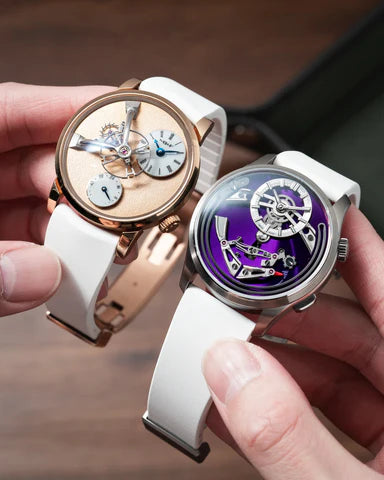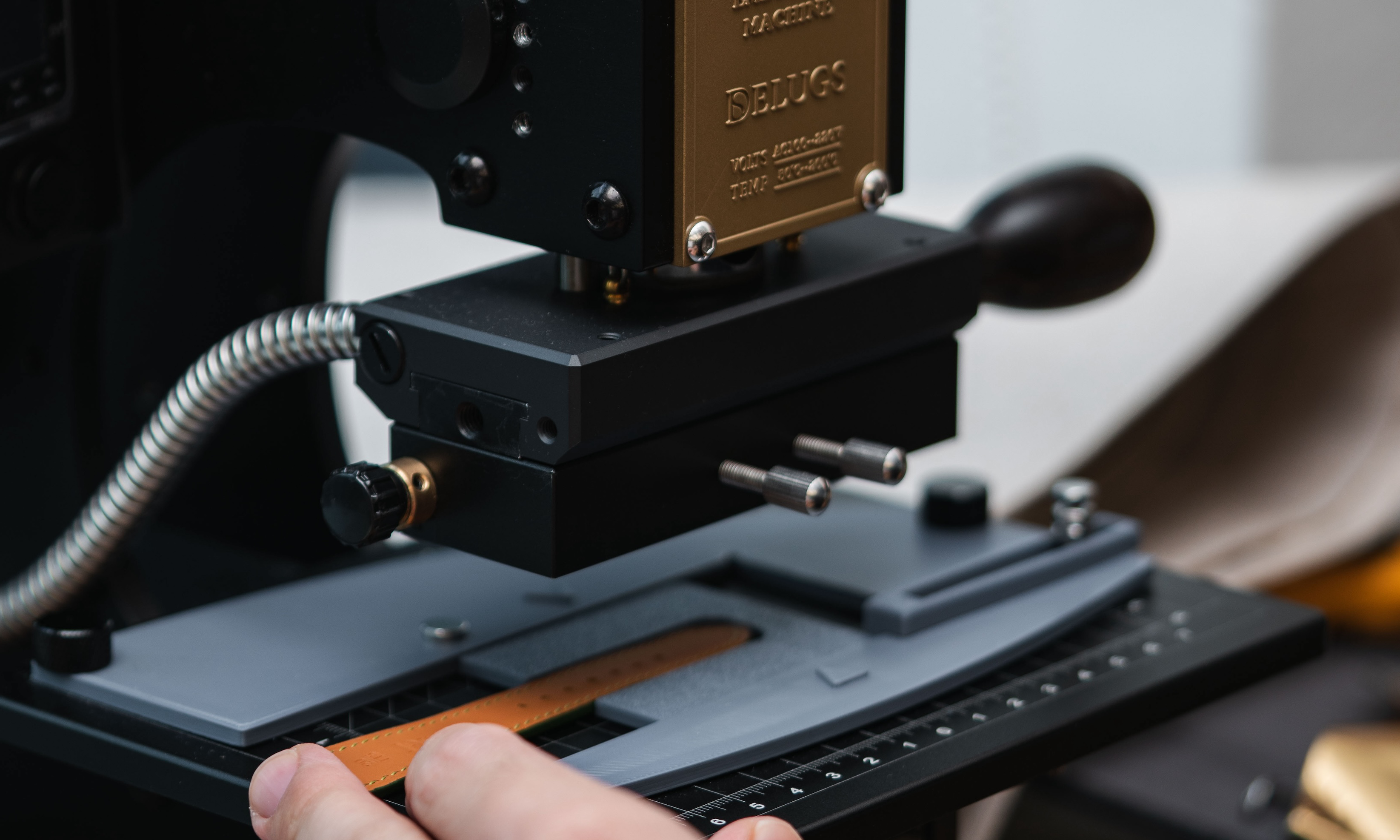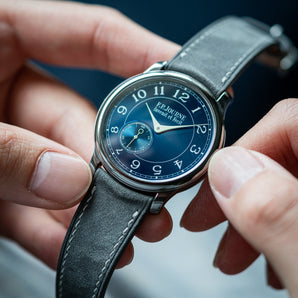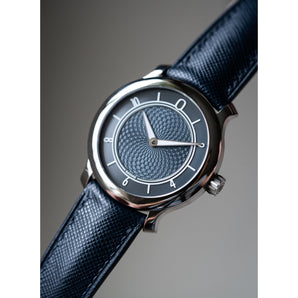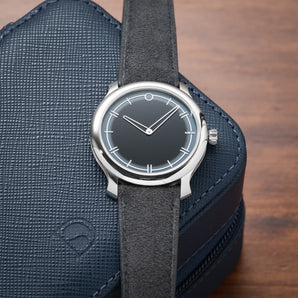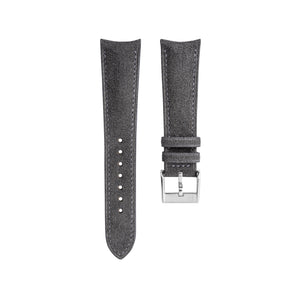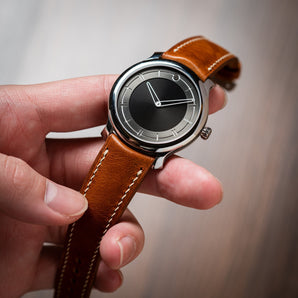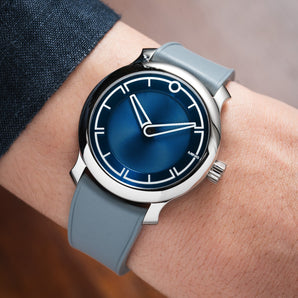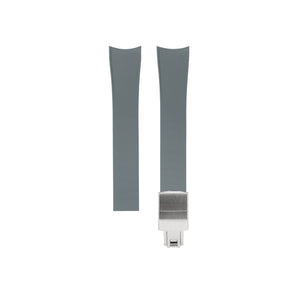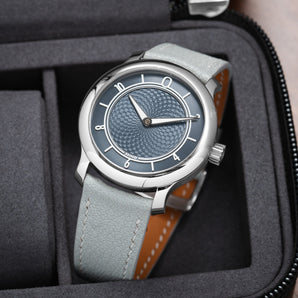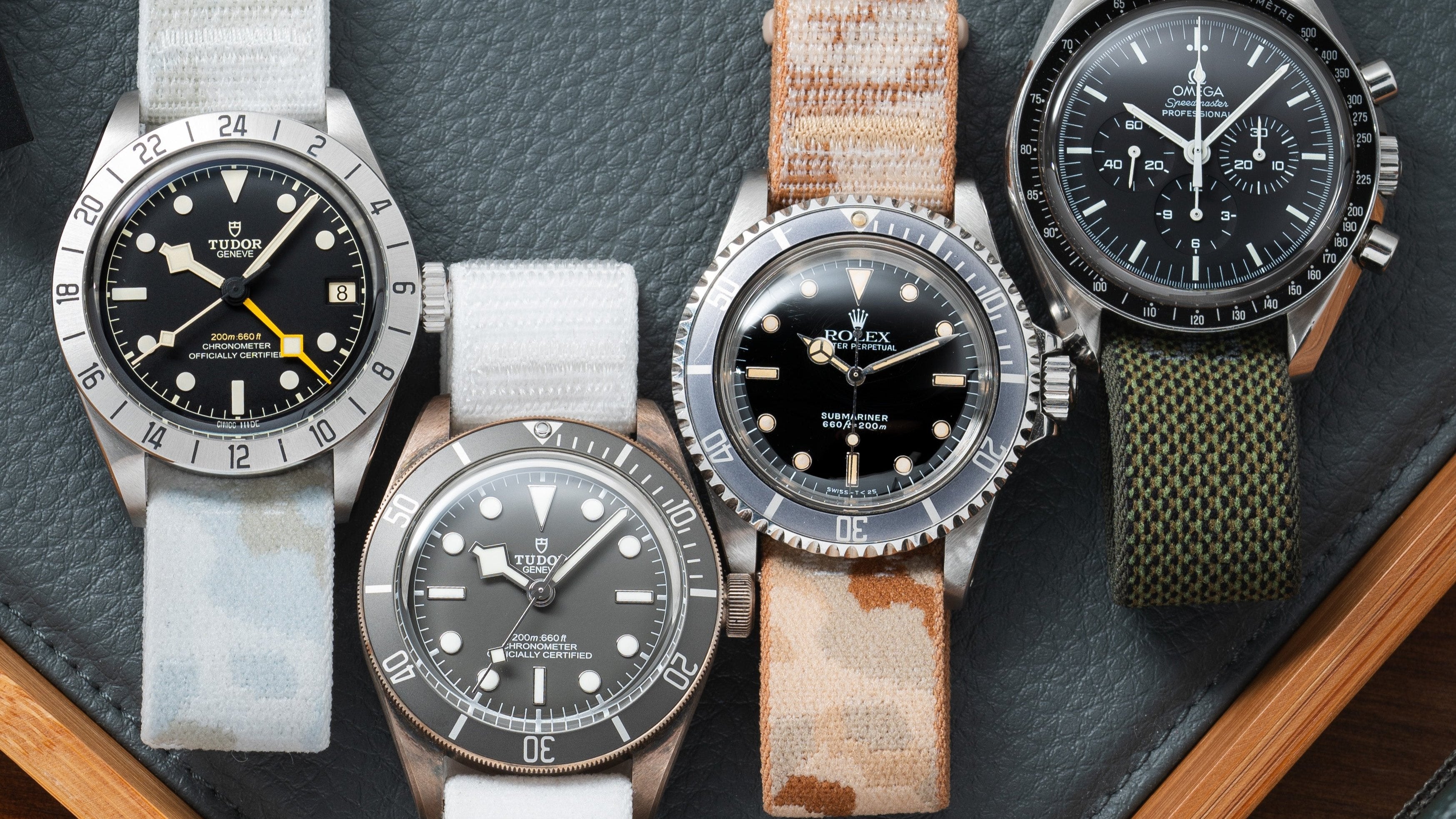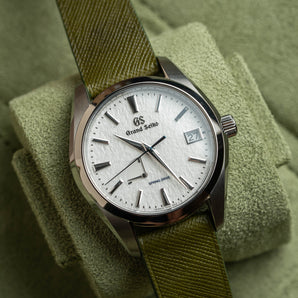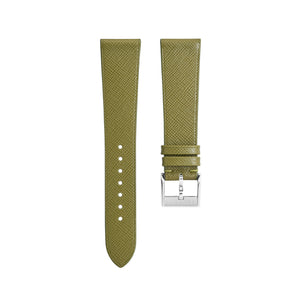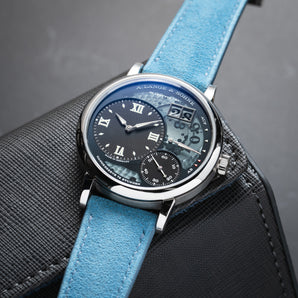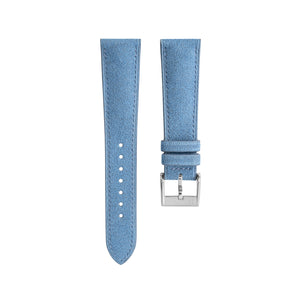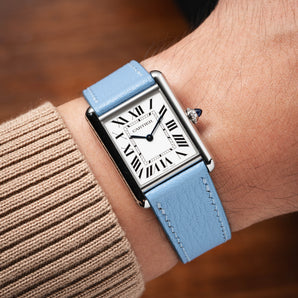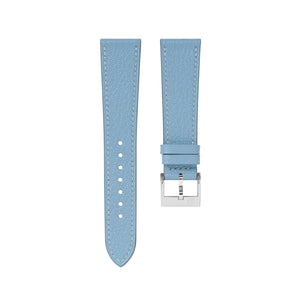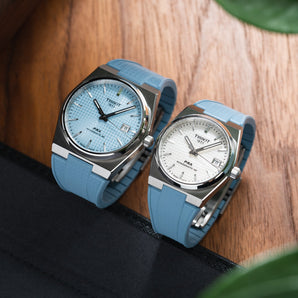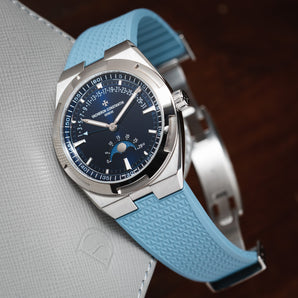In the rapidly evolving landscape of independent watchmaking, few brands have captured attention quite like MING. Founded in 2017 by Ming Thein (MT), Praneeth and four other co-founders, the company has defied conventional wisdom about how watch brands should develop and price their products, and engage with customers.
The numbers speak to their success: 75 references across eight years, 15,000 watches shipped to 7,000 unique customers worldwide and two prestigious GPHG awards. But perhaps more tellingly, they've achieved this while maintaining price points from accessible entry-level pieces to serious haute horlogerie, refusing to be pigeonholed into a single market segment.
At the heart of the MING story is a fundamental tension between artistic vision and commercial reality, between pushing boundaries and maintaining accessibility. CEO Praneeth Rajsingh navigates this daily as he works to scale a brand built on an uncompromising creative vision while building a sustainable business.
This conversation took place at Delugs' Flagship Boutique in Singapore in early May, during one of MING's events as part of AHA (Alternative Horological Alliance). Surrounded by their latest creations—including the yet-to-be-released 29.01 Midnight Worldtimer and a revolutionary AgenGraphe chronograph with a single-piece titanium dial — Praneeth opened up about growing an independent brand and what it means to put design first in an increasingly commercial industry.
GPHG Success & Industry Recognition
Ken: Let's start with the GPHG wins. Last year, you guys won for the 37.09 Bluefin, and back in 2019, the 17.06 Copper won as well. What's the significance of such wins for the brand?
Praneeth: Winning a GPHG is an honour. It's validation that MT's vision and our take on watchmaking have legs. We're in year eight now, and honestly, every launch is just as anxiety-inducing as day one. I believe if you don't feel that before each launch, you haven't pushed the design or product far enough — you haven't tried something new. If you try something new, you're taking risks, which brings nerves.
Winning the GPHG is one piece of validation, saying we're heading in the right direction. At least in the same postal code, if not necessarily on the same street, where the world is headed.
Ken: Do you feel differently about the Bluefin winning in 2024 versus the first win in 2019?
Praneeth: Funny story — both the Bluefin and Copper were some of our most painful products for operational and supply chain reasons. Within the team, these wins were bittersweet. You went through all this pain, and at least it was recognised. But you always ask yourself, “Would you rather not have gone through that pain?”
The Bluefin was really that crisis moment for us. We had a major supplier issue and the original design completely fell through. MT had to redesign it from scratch in 24 hours, rush prototypes in three weeks, and basically relaunch a new watch within two months. That watch won the GPHG. We're still trying to figure out what that means.

Both wins feel equally significant, but there are external differences. You always remember your first. In 2019, they would tell you two days before the event that you'd won — they want to make sure you show up for the award ceremony. When we got the call for the Copper, we were in Switzerland having lunch with the Schwarz-Etienne CEO (Mauro Egermini), who's now part of the MING team. For the Bluefin, we didn't know that we had won until it happened. MT arrived in Geneva an hour before the ceremony started. There's a picture of MT literally falling asleep from jet lag at the ceremony. People said MT looked surprised when he won — because he actually was surprised. He was half asleep from jet lag when they called him up.
Ken: When we met at Geneva Watch Days in 2024 (before GPHG), you mentioned being up against Tudor in the same category (Sports Watch Prize), which was a strong contender for the win.
Praneeth: We obviously believed in our product. We put it in because we thought it was a strong contender and deserved to win. But we're also biased, so we tempered our expectations.
Eight Years of Rapid Innovation
Ken: This is the eighth year of MING. It feels like the brand is much older than that, given how many products you've done.
Praneeth: We've released about 75 references, including dial variants — an average of nine to ten per year. The industry average for a smaller brand is one to two a year. It's a ridiculous pace.
Ken: That's one of the things I admire about the brand. You're not just releasing colour variants — you're actually doing new things, pushing boundaries. When you look at a MING watch, you know it's a MING. Design language recognition is not something many brands achieve well.
Design Philosophy & Evolution
Ken: In the early days, there was lots of talk about MING's design language, but recently less so. How has the design language evolved?
Praneeth: There's such a thing as moving too fast, and we were definitely doing that two years ago. What you're wearing — the 20.01 Series Two AgenGraphe — MT would look at that case and think it feels old, like he can move past it. But at events, someone picks up a 20 series case and says, "This is fantastic. How did you machine this? How do you make the lugs without gaps?"
There's a gap between what MT sees as the creator and what I see working closest to him. There's another gap between me and the rest of the team, then between the team and hardcore MING collectors, then between collectors and the larger watch community. By the time you filter through all those layers, sometimes you move too quickly and people don't understand. They recognise it's a MING but don't understand what a MING is.
We've been discussing how not to run too quickly and give people time to catch up. We now have two generations of design languages available in parallel in different cases. The 20 series case and 29 Worldtimer case [from the second generation design language] with openworked lugs are fantastic — it would be a shame to retire them soon. The 37 [from the third generation design language] is an entirely different, more classical approach. Later this year, you'll see a case made to our fifth-generation design language. When you build an independent brand with 8,000 customers worldwide, 15,000 watches shipped and a team of 15 people, you need to evolve your thinking.
Just because you have design language '5' doesn't mean '2' is outdated. They're just different flavours.
Ken: Speaking of identity, how would you describe the brand to someone just getting into MING?
Praneeth: We don't have one ideal customer type. I meet such a variety of people collecting our watches that I want to lean into that. We're product-first. A good product is universal to some degree, though it takes time to propagate. We make watches that everyone can appreciate.
During launches, we'll see comments saying, "Not for me, but I appreciate this exists." It's easy to focus on the "not for me," but the key part is "I appreciate it exists" — that means we're doing something new, pushing boundaries, putting products first.

What we’re doing with MING is taking two to three centuries of mechanical watchmaking and putting it in the context of the age we live in. All of our watches are mechanical so far. We've had our take on guilloché and classical concepts, but done in ways that could only be made today. Project 21, our Black Box project, is sized like a vintage dress watch, but the monobloc tantalum case couldn't have been made 40 years ago. The multi-layer dial wouldn't have been possible even 10 years ago.
That's what MING is — good design and solid watchmaking in the modern age.
Product Development Philosophy
Ken: How does product development work? Do you start from what customers want, or from what MT wants to produce?
Praneeth: Fundamentally, MING is a selfish undertaking. We don't make things we don't like. Everything originates because MT, as a person, will have ideas. Sometimes the team has discussions — it's not one-way, it's a conversation. MT might say, "I wasn't into this initially, but six months later, something made sense, so I came up with this design." MT originates ideas. That hasn't changed from day one and I don't want it to change. That's what helps people look at a MING and go, "That's a MING." That's what helps you take risks you wouldn't otherwise take.
What's evolved is capacity. In the early days, we could only develop one watch at a time. Now, we have 20 to 25 watches in various development stages and MT has even more designs than that. We say, "Here are all the designs MT likes," then consider running a commercial business and serving our community. When you put those three pieces together, of 50 designs, what makes sense? Maybe only 15 or 20 designs. That's what we focus on.
We listen to what our community wants and what's reasonably possible within the timeline and budget, but it starts from selfish design.
Ken: I appreciate that approach. If you're making something you don't believe in just to capture demand, it will never feel personal.
Praneeth: At the end of the day, you don't know what's going to be popular. At least you want to make something you're willing to stand behind and say, "I believe in this product."

Business Model Evolution
Ken: Let's talk about the business model. For most of eight years, you've been online-only with your queuing system and payment process. This year, you introduced retailers. What resulted in the shift?
Praneeth: For product development, we're selfish. For process and customer experience, we listen to community feedback. During the pandemic, watches went crazy. Because we had great products, things got crazier for us. A big problem was bots — it sounds ridiculous for a three-year-old brand, but being on Shopify in an ecosystem with entire shadow economies built around flipping and scalping became a problem.
I realised luxury e-commerce is still very nascent. How do you provide an online experience that is as premium and well thought out as an in-person experience? Old-school luxury brands don't really do e-commerce. Building cart holds was one step, as customers felt mad when items in their cart sold out while entering payment details. That's fine for Amazon, not for a $20,000 watch. We invested mid-six figures into building the cart hold system.
The watch world has become more normal and rational now, which is healthy in the long-term. It brings us back to what this hobby has always been — an offline experience. You have to handle watches, put them on. It's why you [Delugs] have this flagship boutique with the strap wall — it's a very different experience.
We started online but never intended to remain solely online. Watches cannot be online-only.
You can set up flagship boutiques, but doing that in ten cities worldwide — you need a lot more people and resources. What made sense was finding good people who know their community in each region and partnering with them. We use the same approach for making watches — partner with the right suppliers.
The trick is, if you're too young a brand, you can't establish your customer service approach. That's why we didn't do it early on. Now, we're big enough and the retail landscape has evolved, with people willing to rethink traditional models.
Ken: What about events? There are so many watch fairs — there’s something somewhere every other week. Will MING participate in more events?
Praneeth: Yes. This goes back to watches being offline experiences. But we're still figuring out what that looks like. This is the first year where MT himself isn't travelling as much, because he can't design watches, do engineering, photograph them, and travel constantly. I'm spending lots of time on the road, but I can't be in Singapore and San Francisco simultaneously.
The rational next step is team growth, but growth brings challenges. You want consistent experiences without growing too quickly. We'll do more events — my calendar from August to December basically puts me in a different country every week.
There will always be the decision of going where people have supported you versus going to places where you can meet new people and build community. How do you do both with limited time and resources? But regardless, the short answer is yes — MING will participate in more events, introduce more retail partners, and look out for any form of offline experience we can invest in. Our online experience will evolve too.
Ken: Can you share more about the evolution of the online experience?
Praneeth: First, we're moving away from cart holds. The trade-off with cart holds was eliminating actual carts to avoid unreasonable system costs. Right now, you can't add multiple items to the cart, but you get cart holds where once you add something, it's yours. That was useful in the past, but these days we don't need cart holds anymore. Instead, what we need is the option to order three straps at once without running the cart three times.
We're also thinking about customer accounts for digital warranties and other features. We're finally at a point where we have enough watches out there that this makes sense. Lastly, we’re exploring other ideas to bring partners into our online ecosystem and make the entire experience more seamless for customers.

Strategic Vision & Future Plans
Ken: In the first few years of the brand, there was a heavy emphasis on product development, but now you're doing much more [events, retailers, AHA, online experience]. As CEO, what do the next few years look like?
Praneeth: I wish I could say I know more now than eight years ago, but this industry remains a roller coaster — it changes every six months. In short, MING will continue to make amazing products but with better diversification.
One thing MT and I have wanted to do but haven't had time and resources for is filling out our range of offerings. We've done lots of watches under CHF 5,000 and quite a few around CHF 20,000 — but not much between, which is a glaring gap. Part of this was because of limited access to movement suppliers. During '21-'22, we couldn't even produce what we had fast enough.
The other part is the evolution of thinking about design languages running in parallel rather than sequentially. Now, the 37 series is entry level, 29 and 20 are flagship models, and the fifth generation cases coming later this year will be mid-range, between five and 10.
Regardless of what expression of watchmaking or complication you're looking at, there should be a MING take on it.
Ken: You've straddled different price points since the beginning, launching the 17.01 [US$900] and 19.01 [approximately US$7,390] at completely different price points. Was that intentional?
Praneeth: Definitely intentional, though it made our life harder. We didn't want to get shoehorned. We've always said we want to make watchmaking with good value, but value isn't the same as price. If someone offered to sell you the original Mona Lisa for 50 million — that's not cheap but it's very good value.
In 2017, we knew going in that we had lots of ideas but no idea how we'd execute everything. It was important not to get boxed in—that's what watch numbers one and two accomplished.

I'm the youngest on the founding team. When we started MING, I was in my last semester at university. The first MING I bought was after lots of hours worked on campus at minimum wage. The second watch was my first two months of paycheck at MING. I'm young enough to remember getting your first paycheck and discovering expensive taste.
It's important to me that we have what I call the staircase of independent watchmaking. If exciting, independent watchmaking exists only at CHF 50,000 and up, how do you get new people excited? How do you get new people into independent watches? Not everybody can spend CHF 30,000-50,000 on their first independent watch.
We, as watch collectors, tend to criticise the industry for not having exciting watches. Sometimes it's valid, sometimes not. It's important that we make accessible watches that are exciting. When friends call me asking where to start with a mechanical watch for $600-800, I can think of Baltic, Furlan Marri. [Next], buy MING, buy a [37.02] Minimalist and keep working your way up.
It's harder now to make a watch at the Copper price point because there's only so much you can do with technology and ideas at that level. But as hard as it gets, we'll continue trying to have watches at CHF 4,000-5,000 always.
29.01 Worldtimer and 20.01 Series 5 Deep Dive
29.01 Worldtimer Midnight
Ken: Tell me more about this new Worldtimer.
Praneeth: This is the 29.01, launching mid-May 2025. This is the third iteration—we did the original 29.01 Worldtimer two years ago, then the Dubai edition, which, despite not being able to read most of the dial, is one of my favourites that I wear a lot. This is a sportier take called the Midnight — DLC case with a black dial.
Back to product development — this is something where if you asked, "Would customers want this?", it was unlikely it would be made. When we launched this version of the 29.01, I said, "MT, what if we DLC-coated the case and made it black? I think I'd wear that." He replied, "That seems interesting; let's prototype it." We would have made one for ourselves if it didn't work out.
Then customers saw it and said, "This is really cool." We said we weren't sure we'd make it. They told us, "You're crazy, you have to make these."
That's what I mean by being selfish. We start things because we think the idea is cool, and if we’re lucky, other people find it cool too.

Ken: The original 19.02 Worldtimer was very beautiful. It's unique to see the evolution from the first generation to the second generation.
Praneeth: This is the second generation and a close evolution of the 19.02. The 19-series case has a sapphire sandwich. The 29 series doesn't have a box crystal at the back but has a much cooler top crystal with bezel-less construction — the crystal sits directly on the case band. This makes the dial feel more expansive and the whole thing feel like a pebble on your wrist. It also has the openworked lugs from the second-generation design language.
The feedback we had with the 19.02 was legibility — people said, "This is cool but I can't read the cities, especially as my eyesight gets worse." The 29 series addresses that — it's a 40mm case with the cities pushed to the outside.
20.01 Series 5 AgenGraphe: Innovation in Dial Technology
Ken: Let's talk about the chronograph you're wearing.
Praneeth: This is a new 20.01 Series 5 AgenGraphe for 2025. The AgenGraphe or 20.01 has always been the platform for launching new dial technologies. The watch you have [20.01 Series 2] is the Mosaic. We’ve done two AgenGraphes with the Mosaic theme previously, then last year a gold one with a fused borosilicate dial with hand-filled lume voids [20.01 Series 3]. This year, it's our first 20 series in steel for variety. The dial is one of the coolest we've ever made, completely inspired by science fiction.
Ken: What am I looking at? It looks like needles and little parts.
Praneeth: I showed it to a customer who said it looks like a dial made from the hands of other watches. I said, "This isn't Game of Thrones." The inspiration is science fiction and aeroplane engines, but it's a single block of titanium. That whole dial is one piece — nothing glued, nothing set or applied. It's laser milled from a solid titanium block over lots of time, then PVD coated blue, then lasered again to remove the blue on top.
Ken: So, both the blue and silver parts are a single piece?
Praneeth: The whole thing is one piece. When the team saw the 3D file from MT, we said, "How are you going to make this?"
Ken: Where does the idea for a dial like this come from?
Praneeth: Honestly, I don't think MT knows either. I've distilled it to: If you can actually give an answer, you haven't done a good job pushing yourself. I can tell you the rough inspiration — science fiction, aeroplanes, guilloché from architectural cladding like the KLCC (Kuala Lumpur City Centre) Twin Towers and other skyscrapers with aluminium or steel cladding, race cars from the '60s-'70s with hand-beaten aluminium panels. All those were sources, but by the time it comes out on the other end, how did you get from here to there? You shouldn't be able to draw a straight line [from the inspiration to the final product] — if you can, we probably haven't done enough at that point.
Ken: Looking at it, it looks like individual pins assembled into a dial. But knowing it's one piece, I still can't connect how you get the different colours and overall aesthetic.
Praneeth: This is also the only 20.01 with blue chronograph pushers to match the dial.
Engineering Excellence & Learning
Ken: Even though the 29.01 Worldtimer is 40mm in case size, it's actually very wearable. I'm wearing the 20.01 Series 2 — case size is 41.5mm and it’s pretty thick on specs [14.2mm], but when I actually put it on my 16.5cm wrist, it's very wearable.
Praneeth: MT has a similarly sized wrist. Back to being selfish — he's not going to design a watch he can't wear. When he first designed the 20.01 case, it was one of the first cases designed in 3D CAD after he had taught himself. He wasn't at the point where he could engineer a complete case — he just did externals, while our case partner handled engineering.
Our partner came back saying the case size had to be 42mm. MT wanted 41mm, and fought for three months to finally get it down to 41.5mm.
Ken: Three months just to shave off half a millimetre?
Praneeth: MT didn't understand why it couldn't be done. That project convinced him to learn case engineering himself. Now, he designs everything in 3D CAD, prints prototypes in our workshop in Kuala Lumpur to test how they wear, and validates the construction before sending it to manufacturers. By that point, he's proven it can be made — the manufacturers just need to figure out the manufacturing process.
Ken: That process of learning and solving problems really demonstrates what kind of company MING is.
Praneeth: When we started, we'd look at things and say, "That's so simple, why didn't anyone think of that?" Then we'd do it and realise, "That's why people don't do it." We made lots of mistakes that way.
Two days ago in Kuala Lumpur, we bought a neo-vintage, early 2000s watch because we'd heard good things about the bracelet — apparently one of the world's most comfortable — but they stopped making it because it's too expensive. We thought, "Is it really that expensive?" Bought the watch, took it apart, and quickly realised why that bracelet is impossible to make. It looks like a regular single-piece link, but to remove one link you need six tiny screws and the link is actually five pieces. MT and I immediately said, "We're not doing this."
Six years ago, we wouldn't have had the budget to buy that watch or the foresight to examine it first. We would have tried to recreate it and had painful lessons in how not to make a bracelet.
Ken: So you're smarter about how you do things.
Praneeth: Well, that means we just make new mistakes.

The Complete Experience: Beyond the Watch
Ken: Final question: MING places so much emphasis on straps and bracelets, which is quite uncommon for a watch brand. You’ve released universal metal bracelets, keeperless leather straps, your own buckle concept and FKM rubber straps. Why this obsession with straps?
Praneeth: It's about having swappable straps. When we started in 2017, quick-release straps were unheard of. It was important to us because we were collectors and enthusiasts who'd gone through buying a watch and wanting to change up the look the very next day. So we thought, "If we're starting a brand, let's assume other people like us would like to swap things about."
So quick-release spring bars, and every strap comes with a buckle — no exceptions.
Our first metal bracelet had fitted end links. We realised the bracelet was comfortable but the economics of fitted end links were terrible. If you're making 10 references a year, you can't be engineering different end links for all 10 references. Also, fitted end links aren't comfortable for certain wrist sizes because you can't have full articulation without increasing the lug-to-lug.
MT said we'll make our bracelets with universal fitment like our straps — universal compatibility, fully articulating and more comfortable. We continued our focus on straps because wearing a watch is ultimately a tactile experience – the watch can look cool and work well, but if it's on the wrong strap, it will never feel good on the wrist. I've worn heavy watches on light, flimsy straps where you feel the weight clunking about every time you move your wrist. That's imbalanced. But you don't want a thin watch with a very thick strap because then you only feel the strap.
Having a balanced wearing experience is important — that's what furthered this obsession with straps.
Ken: That really shows how much you think from a customer perspective. It's the entire package — not just the case or movement but how it's worn.
The Philosophy Behind It All
Praneeth: I was having dinner two weeks ago at a new restaurant in Dubai with the chef, Tristin Farmer. He said this about his new place: "I want people to come down, order food, eat it, think 'this is tasty' and go home. If you don't want to know what goes into the food, how it's made, the genesis — that's fine. It's not important to enjoy the experience. But if you are interested, we can tell you that."
I think the same way about our watches. You should be able to pick up a MING, put it on your wrist and it should make you smile. You can enjoy it without knowing whether it's made of a single piece of titanium or multiple pieces — that's secondary for most people. Most importantly, does the watch make you smile? If yes, then all the other stuff can come later. But if the watch doesn't make you smile fundamentally, the rest doesn't matter.
Closing Thoughts
What strikes me most about the MING story is how it embodies the tensions facing independent watchmaking today — balancing artisanal craft with modern manufacturing, traditional values with contemporary design, and delivering meaningful innovation.
The most telling moment comes when Praneeth describes MT learning case engineering because manufacturers said, "It can't be done." Rather than compromise the vision, he acquired the knowledge to prove them wrong. This encapsulates the MING ethos: choosing the harder path in service of better solutions, whether that's developing universal bracelets, investing six figures in e-commerce systems or creating single-piece titanium dials.
In an industry often accused of being too conservative, MING represents something different: taking the best of traditional watchmaking and asking how it can be improved for the modern age.
You can learn more about MING by clicking here.
*Responses have been slightly edited for length and clarity.
